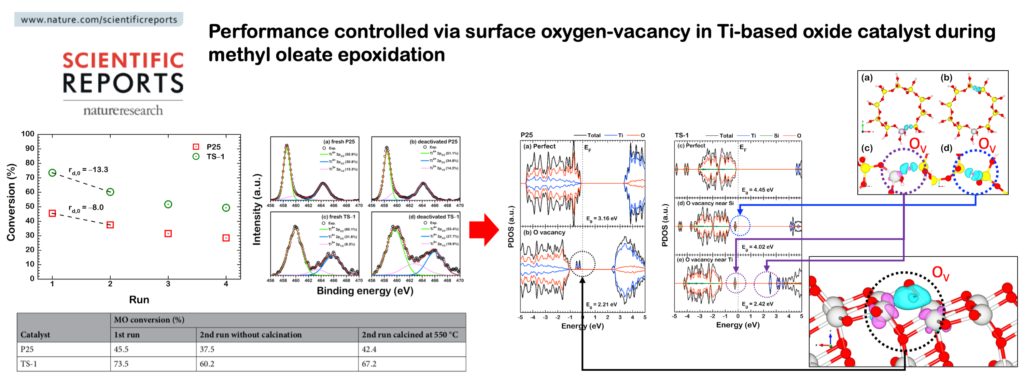
This work investigated deactivation mechanism of TS–1 and P25 Ti-based oxide catalysts during expoxidation reaction by density functional theory (DFT) combined with an experiment. The highlighted results are that
- The fouling causes catalyst deactivation but in a regenerative way as the activity of the catalyst can be restored via the calcination in air oxidizing all the fouling species.
- The catalyst surface also deactivated through the loss of oxygen atom, forming the oxygen vacancy surface which induced the formation of the interstates in conduction and valence states of the catalyst, where these interstates resulted in the decrease in energy gap for both catalysts leading to the modification of the activity of the active region on the surface.
- The oxygen vacancy formation introduces a new electron-rich site on the deactivated surface in both P25, and TS-1 confirmed via the Bader charge analysis, where the charge accumulation is observed in the oxygen vacancy site.
Read this research article: https://www.nature.com/articles/s41598-020-76094-2
